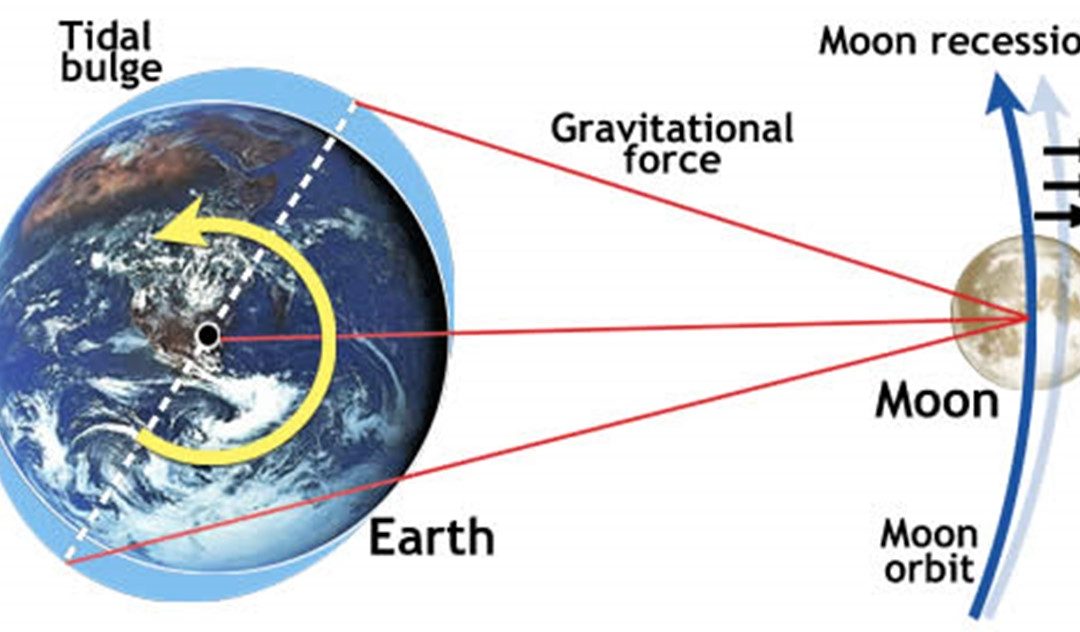The Lesser Light and Stars, Day 4 – Lesson 11, 2024
Genesis 1: 14-19 KJV
14 And God said, Let there be lights in the firmament of the heaven to divide the day from the night; and let them be for signs, and for seasons, and for days, and years: 15 And let them be for lights in the firmament of the heaven to give light upon the earth: and it was so. 16 And God made two great lights; the greater light to rule the day, and the lesser light to rule the night: he made the stars also. 17 And God set them in the firmament of the heaven to give light upon the earth, 18 And to rule over the day and over the night, and to divide the light from the darkness: and God saw that it was good.
19 And the evening and the morning were the fourth day.
Day 4 – Last week Lesson 10 explored the Greater Light – The Sun along with discussing the daily rotation of Earth. This week, Lesson 11, we will learn about the Lesser Light – the Moon and about Stars.
16 And God made two great lights; the greater light to rule the day, and the lesser light to rule the night: he made the stars also.
Since the sun and moon were not created until Day 4, Earth could not have been in orbit around the sun until the sun was created and put in place on Day 4, and the moon was not in place to orbit around Earth until Day 4. These lights to rule the day and the night did not exist before God formed the earth.
The Lesser Light: The Earth’s Moon
Our created moon is a reflector of the light from the sun. The moon gives light to the earth during the night.
The moon is slowly moving away from the earth. As the moon orbits the earth, its gravity pulls on the earth’s oceans, which causes tides. The ocean tides actually “pull forward” on the moon, causing the moon to gradually spiral outward.
The moon moves about an inch and a half away from the earth every year. That means the moon would have been closer to the earth in the past. For example, 6,000 years ago, the moon would have been about 800 feet closer to the earth, which is not much of a change, considering the moon is 240 thousand miles away. So, this spiraling away of the moon is not a problem over the biblical time scale of 6,000 years.
But, if the earth and moon were over four billion years old (as evolutionists teach), the moon would have been so close; it would actually be touching the earth 1.4 billion years ago.
The moon is Earth’s nearest neighbor, 240,000 miles away. It is Earth’s only natural satellite. The moon is 4 times smaller than Earth. Its gravity is 1/6 that of Earth’s gravity.
Basically, the moon is made of rock. Samples of lunar soil have revealed that it is composed of the following: 42% oxygen, 21% silicon, 13% iron, 8% calcium, 7% aluminum, 6% magnesium, 3% other elements. The moon has no water, no air, no clouds, no wind.
The moon was designed by God for our well-being. It serves the Earth and Mankind: as a nightlight, as a clock, as a calendar, as a compass, and Is responsible for seasons. The moon stabilizes the tilt of the Earth.
The moon’s pull upon the Earth creates ocean tides. Tides keep the seas alive. Without tides there would be no plants. Seas would stagnate.
The moon provides strong evidence for Creation. No other explanation has proven to be possible.
“He made the stars also.”
Stars are massive balls of gas that produce heat and light. The Sun is the nearest star to Earth, but it is just one of between 200 and 400 billion stars in the Milky Way Galaxy, and the Milky Way is one of 225 billion galaxies in the universe. A 2013 study indicated that there are 225 billion galaxies in the observable universe.
Although stars are many many times larger than Earth, and often much larger than the Sun, they appear as small dots of light in the sky because they are so far away. Stars can be different sizes and different colors.
Psalm 33:6 KJV 6 By the word of the LORD were the heavens made; and all the host of them by the breath of his mouth.
Next week, we will learn more about the Planets in our Solar System and the Milky Way Galaxy and other galaxies.
